► Third Futures event discusses ‘Nissan Electric Ecosystem’
► IE: how electric mobility moves ‘beyond the car’
► Plus, could your new Leaf actually make you money?
Nissan periodically holds what it calls Futures Events, where it brings together new product with future thinking and the occasional celebrity endorsement.
In the case of this third instalment – version 3.0, of course – which has just taken place in Oslo, the menu included new metal and tech announcements, the tantalising prospect of powering your EV for free, some chin stroking about the future of mobility under the auspices of the Nissan Electric Ecosystem, and Margot Robbie.
Here’s six things we learned.
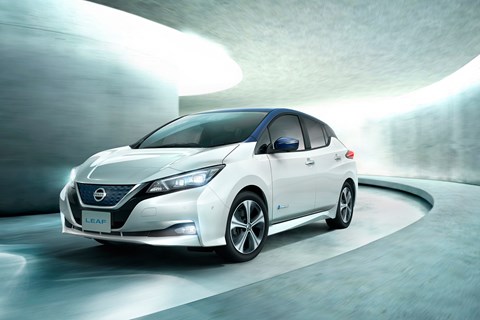
1) The 2018 Nissan Leaf has Level Two autonomous driving capability – and Nissan won’t give us Level Three until at least 2019
The new Leaf is available with Nissan ProPilot.
This is The Name chosen for all of Nissan’s autonomous drive technology going forward, but don’t get too excited just yet. The first-gen version, which debuts on said Leaf, is basically an advanced adaptive cruise control system with lane keeping assist and a traffic jam assistant – much as that offered by many other manufacturers.
Nissan Europe’s GM of product planning, Peter Bedrosian, describes this as ‘single-lane motorway driving’ autonomy, equivalent to the SAE (Society of Automotive Engineers) Level Two.
However, Bedrosian went on to say that we could expect gen-two ProPilot in 2019. This will be a Level Three system that ‘can manage multiple lanes’, not only in terms of overtaking but also dealing with motorway ‘intersections’.
Accordingly, Bedrosian’s hope is that you ‘get on the motorway in Paris and don’t touch the controls again until you reach Barcelona.’
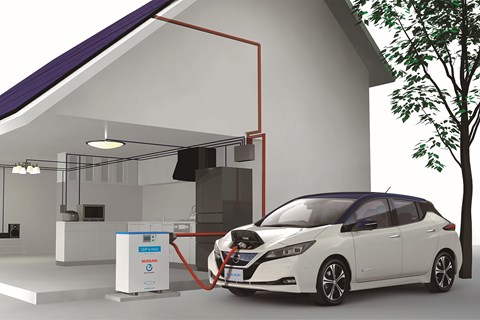
2) Charging is getting easier – and faster
Nissan has already built a network of 4600 quick chargers in Europe – an investment to the tune of 50 million Euros – but electric vehicle director Gareth Dunsmore tells us it’s far from done yet. Another 1000 will be going in over the next 18 months, cementing the firm’s position as the builder of the most comprehensive network in the region.
But it’s not done there, either. Accompanying the introduction of the new Leaf is the availability of a new 7kW ‘double speed’ home wallbox, which reduces charging time to 5.5 hours.
Still not fast enough? Then you’ll love the also new 22kW charger. Aimed at businesses but available to consumers, too, this is a ‘plug and play’ installation – so no digging up the pavement – that can recharge a new Leaf in just two hours.
If you have to ask the price, you can’t afford it… Fortunately, Nissan reckons your electric car will soon be able to make you money as well.

3) Run your electric car ‘for free’ – and maybe even make a profit
In Denmark you can already run a Nissan Leaf with zero electricity costs. This requires some supplementary investment – in a solar array and a static battery storage solution – but still. Nissan is now bringing this opportunity to the UK.
Working together with energy company OVO, in 2018 Nissan will sell UK consumers an evolution of its existing xStorage system. Plug this home charging box into a solar array and sign up to OVO’s algorithm, and this will manage ‘electricity trading’ – buying and crucially selling electricity to the national grid – to such a neat extent that you’ll never be out of pocket charging your Leaf again.
The theory works by capturing energy during low demand hours, storing it, and flogging it on when demand is highest. High demand means this electricity is worth more money – thus at the very least you ought to break even.
Add to this the Leaf’s bi-directional charging capability – which means that it too can function as static storage, capable of feeding electricity back to the grid during periods of high demand, a process that’s labelled ‘vehicle-to-grid’ – and you could even end up making a profit.
The new-fangled box uses new and second-life batteries, comes in three storage sizes, and we’re told the middle one (4.6kW) will cost around £4k plus VAT – installed, but not including the solar array. One for the forward-thinking early adopter to ponder, perhaps.
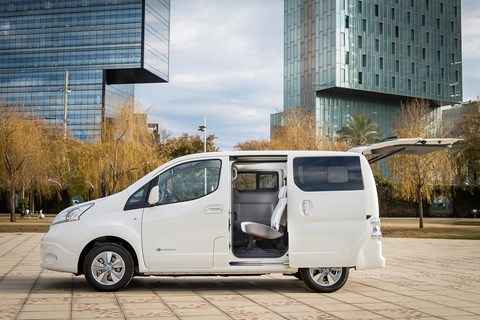
4) Vans need to go green, too
In addition to the new Leaf, Nissan also rolled-out an upgrade to its e-NV200 electric van at Futures 3.0. This gains the same 40kWh battery pack technology, hot-rodding its official driving range by further 62 miles to a new total of 174. That’s more than any other electric van on sale.
You may be thinking: so what? But our addiction to home delivery is slowly choking us – while there’s been a 10% rise in vehicles on the road in Europe since 2000, 38% of those are vans, which are bigger, heavier and therefor more polluting than cars.
Nissan Europe chairman Paul Wilcox reckons this is an area where Nissan’s EV expertise can make ‘a huge difference’, but is calling on governments to ‘step up’ and do more – by incentivising delivery drivers and businesses to adopt zero emissions (in motion…) technology.
A 60% increase in the e-NV200’s range will help, but it’s hardly a lightening cure. More effort is needed here – from everybody.
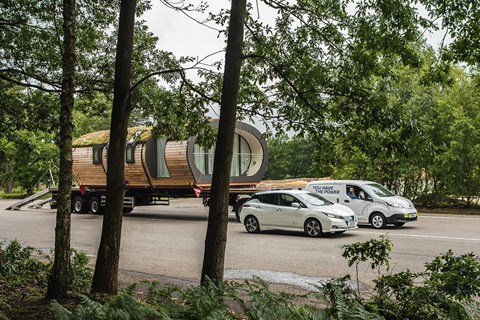
5) The future is also looking kind of mean
It wasn’t by accident Futures 3.0 took place in Oslo – this Norwegian city is also known as the EV capital of the world. Last month (September 2017) 39% of the cars sold there were electric. Elsewhere (okay, outside Norway), that figure is more like 1%.
So, there was a lot of umming and ahhing about whether Oslo can be used as an example of how to accelerate EV adoption in other places.
Trouble is, Norway is an exceedingly rich country, which makes incentivising EV adoption much easier – tax on regular cars is historically sky high, so it’s been completely removed on electric models, plus buyers get access to bus lanes, free parking, lower toll charges, the works. Frankly, you’d be mad not to drive an EV in Oslo, but it’s hard to imagine many other places being able to afford such eco-friendly generosity.
And even in Oslo, such generosity can’t last forever – eventually taxation will have to levied against all these eco-warriors as well. The cunning plan is to make the tax on the remaining dinosaur burners much higher still, so taxed EVs still look more attractive than conventional combustion.
Is there something a little mean about this? Maybe. But the kicker is that while adopting electric vehicles may improve air quality, it doesn’t necessarily ease traffic congestion. So in order to ‘incentivise’ public transport and bicycles, etc, etc, Oslo is also taking away parking spaces in the city – 600 are going this year.
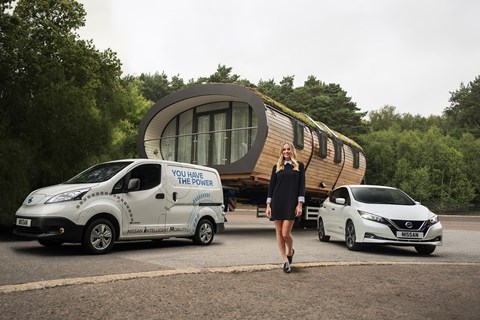
6) The bit with Margot Robbie
This time Nissan’s most glamorous Electric Vehicle Ambassador has abandoned the Blade Glider and is instead aiming to boost the publicity traction of three new Nissan projects coming in 2018 – each intended to ‘help those who need it most’ by repurposing battery technology.
The first is a ‘micro-grid system’ – essentially a transportable electricity network that can be taken to communities without their own sustainable electricity supply. ‘This will give residents better access to basic needs like education and healthcare,’ according to Nissan.
Second is the physical application of the Nissan Electric Ecosystem to needy municipalities in Europe. ‘This includes equipping a residential building with a solar power system, Nissan xStorage, vehicle-to-grid technology and new Nissan Leafs for car sharing.’
Third is less well defined at this stage, but involves joining forces with partner organisation in high-risk natural disaster areas in order to deploy technology to help. The example given so far is to equip e-NV200 vans with additional battery packs in order to provide ‘mobile, sustainable back-up energy’ should the existing infrastructure fail for some unavoidable reason.